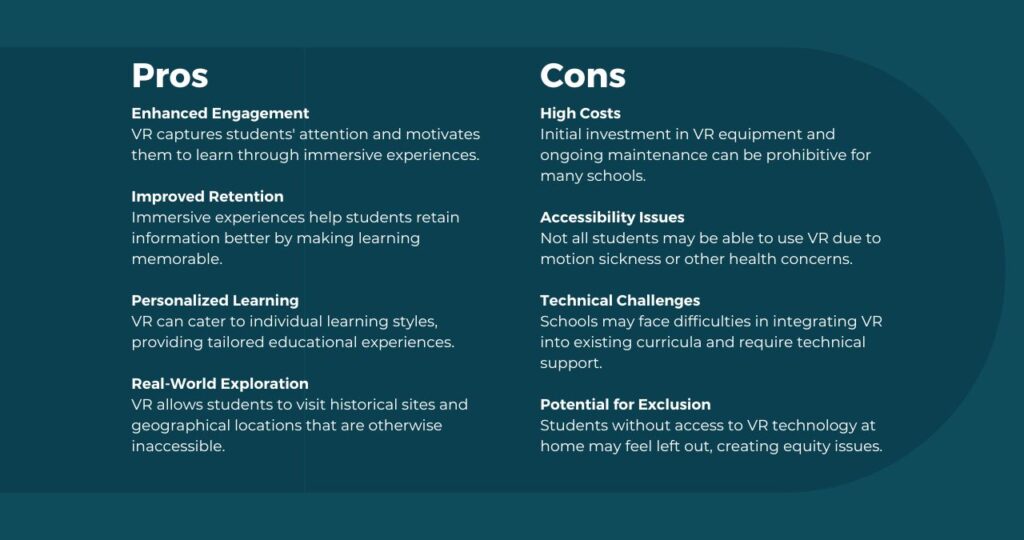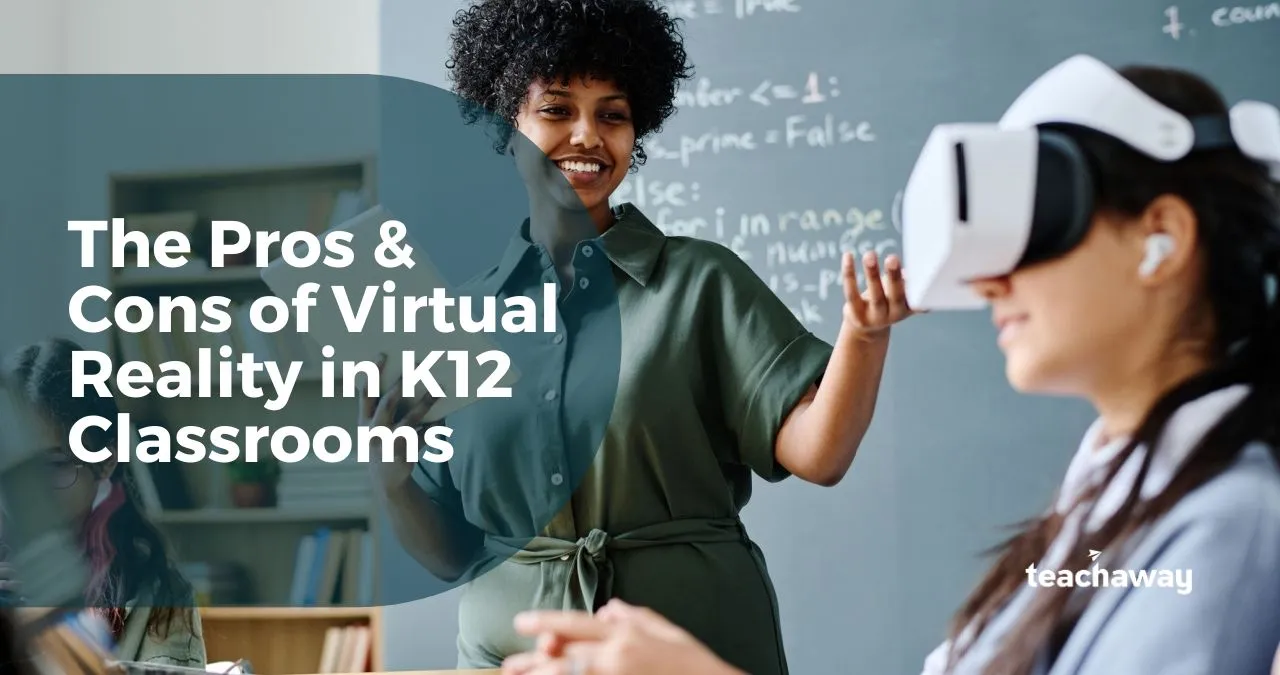Imagine a classroom where students can walk on the surface of Mars, explore the depths of the ocean, or witness historical events unfold right before their eyes. This is not a scene from a science fiction movie; it’s the promise of virtual reality (VR) in K-12 education.
As educators strive to engage students in a rapidly evolving digital landscape, the integration of VR technology offers a transformative approach to learning that could redefine educational experiences.
With compelling case studies emerging from various educational institutions, the potential benefits and challenges of VR are becoming clearer.
Recent case studies have shed light on the potential of VR in education, revealing both significant advantages and hurdles associated with its adoption in classrooms:
Stanford’s “Virtual People” Course
Stanford University’s “Virtual People” course, for instance, demonstrated the feasibility of conducting entire modules in VR environments, with students and instructors sharing over 1,000 hours in virtual spaces.
This cross-disciplinary approach showcased VR’s ability to bridge diverse fields such as computer science, biology, sociology, and art, offering students immersive learning experiences that transcend traditional classroom boundaries.
Virtual Field Trips for Young Learners
A compelling case study from ClassVR demonstrates the potential of VR in K-12 education. Their immersive experiences allow students to explore distant or inaccessible locations, encouraging imagination and vocabulary building.
These VR experiences enhance student engagement and make abstract concepts more tangible.
For instance, science classes can use virtual field trips to help students grasp the scale of our planet, solar system, and universe.
Broader research supports VR’s transformative potential in K-12 education, highlighting its ability to provide enriching experiences and improve concept comprehension.
However, educators and administrators must navigate the financial and logistical challenges of implementing VR technology in schools.
While VR is revolutionizing the K-12 classroom and promising to transform traditional educational methods, the integration of VR technology in schools is not without its challenges.
These case studies showcase the potential of VR in education, revealing both the significant advantages and the hurdles that come with adopting VR in classrooms.
These studies highlight the transformative power of VR in enhancing student engagement and accessibility, while also pointing out the financial and logistical challenges that schools must navigate.
Weighing the Pros and Cons of VR in the K-12 Classroom
Pros of VR in the K-12 Classroom
Enhanced Engagement and Motivation
One of the most significant benefits of VR in education is its ability to enhance student engagement and motivation. VR provides immersive learning experiences that make abstract concepts tangible and interactive.
For instance, studies have shown that VR can significantly improve students’ retention and comprehension by allowing them to experience historical events, scientific phenomena, and complex mathematical concepts firsthand.
This immersive approach can make learning more enjoyable and memorable, leading to better educational outcomes.
Accessibility for Students with Disabilities
VR can also make education more accessible for students with disabilities. Traditional classroom settings can be challenging for students with physical or social disabilities, but VR offers a controlled and adaptable environment where these students can thrive.
For example, VR can simulate real-world scenarios, such as navigating a school or interacting with authority figures, in a low-stress setting, helping students build confidence and social skills.
This adaptability can provide personalized learning experiences that cater to individual needs, promoting inclusivity and equity in education.
Cons of VR in the K-12 Classroom
High Costs and Resource Requirements
Despite its benefits, the implementation of VR in classrooms comes with significant costs. The initial investment in VR equipment and the ongoing expenses for maintenance and training can be prohibitive for many schools, especially those with limited budgets.
Additionally, the need for technical support and teacher training can strain resources, making it challenging to integrate VR seamlessly into the curriculum. Schools must weigh these costs against the potential benefits to determine if VR is a viable option for their educational needs.
Potential for Exclusion and Accessibility Issues
Another concern is the potential for exclusion and accessibility issues. Not all students may be able to use VR due to motion sickness, visual or auditory impairments, or other health concerns.
This can create a divide between students who can participate in VR-based activities and those who cannot, potentially leading to feelings of exclusion and inequality.
It is crucial for educators to consider alternative methods and ensure that all students have access to the same learning opportunities, regardless of their ability to use VR technology.

Key Takeaways
While VR in the K-12 classroom offers exciting possibilities for enhancing engagement, motivation, and accessibility, it also presents challenges related to cost and inclusivity.
Schools must carefully consider these factors when deciding whether to implement VR in their educational programs.
- VR can significantly enhance student engagement and motivation through immersive learning experiences.
- VR offers unique accessibility benefits for students with disabilities, providing personalized and adaptable learning environments.
- High costs and resource requirements can be a barrier to implementing VR in schools.
- Potential exclusion and accessibility issues must be addressed to ensure equal learning opportunities for all students.
